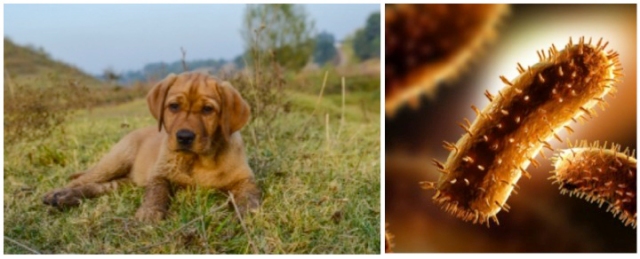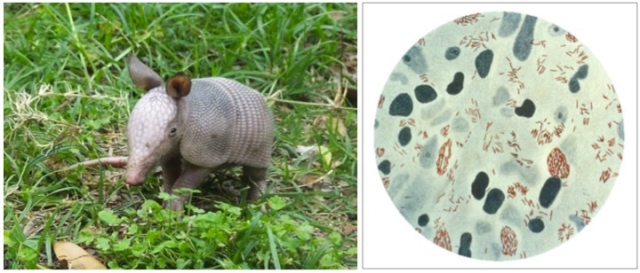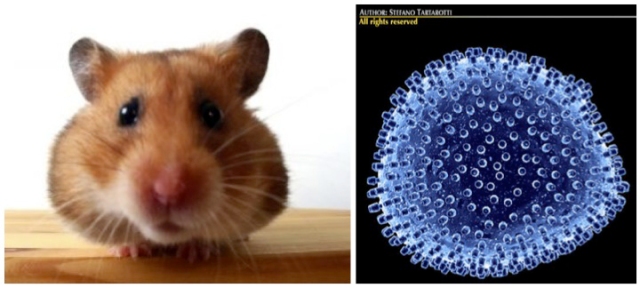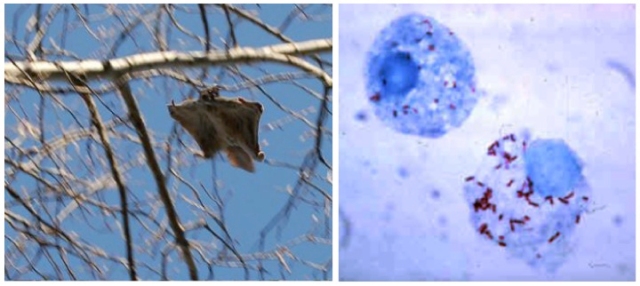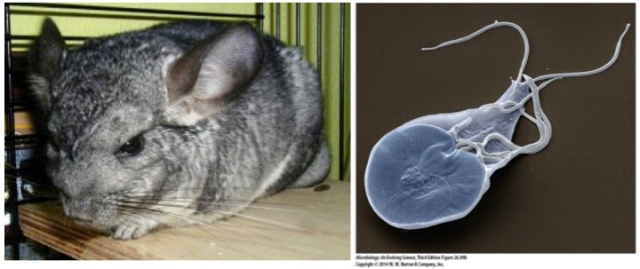Interestingly, IgE earned
its name based on the fact that it reacted with the ragweed pollen antigen E,
now known as the primary ragweed antigen “Amb a 1”. In 1921, scientists K. Prausnitz
and H. Kustner identified a serum component that was responsible for allergic
reaction. It wasn’t until 1966 that T. and K. Ishikawa identified IgE as the
serum component. Everyone has a small amount of this potent antibody
circulating the blood; IgE accounts for less than 0.05-0.2% (0.1-0.4 μg/mL) of
the circulating antibodies in non-atopic individuals. Some, but not all, atopic
individuals have higher levels of circulating IgE, up to 0.79%.
 |
| Even Sabrina Fairchild knew that “More isn’t always better…sometimes it’s just more.” |
In individuals without
allergies, an IgE-mediated immune response occurs as a defense against
parasitic infections. In this case, the resulting physiological changes clear
the parasite and protect the body against further damage caused by the
parasite. However, in individuals with allergies, the IgE-mediated response is
classified as a Type I hypersensitivity.
Let’s follow a pollen grain on its first journey in an allergic individual. The first encounter of an allergen sensitizes the individual to that specific allergen, but symptoms are not experienced. Initially, the pollen particle encounters the peripheral defenses, nasal hairs, eyelids, and beating cilia in the throat. These hairs prevent most particles from entering the airway or sinuses. Pollen particles must be extremely tiny (about 1x10-6 meters) to pass through this initial barrier. Upon reaching the nasal mucosa, enzymes in mucous secretions break down the tough outer shell of the pollen (the exine), releasing the allergenic substance.
Antigen presenting cells
engulf the allergenic substance, process it with enzymes, and display the
antigen on the cell surface within a cradle-like protein called the class II
major histocompatibility complex (MHC). Another type of immune cell, called T-helper,
or Th, cells bind the presented antigen. Th2 cells release molecules called cytokines,
which communicate to naive B cells to begin dividing and maturing. Some B cells
differentiate into plasma cells, which produce and secrete a specific class of
antibodies, or immunoglobulin (Ig). Humans produce 5 circulating antibody
isotypes: IgG, IgM, IgA, IgD and IgE. Particularly,
Th2 cells produce the cytokines interleukin (IL)-4 and IL-13, which stimulate B
cells to produce IgE. The allergic response appears to be localized, as plasma
cells secreting IgE are 1000 times greater in nasal mucosa than in circulation.
In addition to producing the
correct isotype, the plasma cells also produce highly specific antibodies that
will bind the antigen tightly. Through the process of clonal selection and
clonal expansion, a specific IgE molecule with high affinity for the antigen is
produced en masse, creating an army like the clone troopers.
 |
| Although the army of IgE clones may not be as large as the clone troopers, it's every bit as powerful in wreaking immune havoc. |
Nothing happens yet, but the body essentially lays in wait to encounter the allergen again. Upon second exposure, the allergenic antigen binds two IgE molecules that are already situated on the mast cells and basophils. These crosslinked IgE molecules are much more stable and can continue sending signal for weeks. The signal, as allergy sufferers know all too well, is a massive inflammatory response mediated by various pharmacologically active molecules contained within and produced by mast cells and basophils. These cells store the inflammatory molecules, like histamine, in granules or inner pockets. When the antigen binds IgE, mast cells and basophils undergo degranulation, releasing large amounts of chemical mediators like the histamine targeted by most antihistamine allergy medications.
Mast cells quickly
synthesize additional mediators, including leukotriene and prostaglandin. These
mediators signal certain physiological changes, including vasodilation (nasal
blockage), smooth muscle contraction (coughing), increased mucus secretion
(runny nose), and increased vascular permeability (inflammation). Sensory
nerves are stimulated, resulting in sneezing and itching. This early phase, or
immediate hypersensitivity reaction, happens so rapidly that symptoms are
noticed within minutes of exposure to the allergen.
Although histamine is probably the most well-known pharmacologically active molecule, it is actually not the most potent or the longest acting player. Rather, it is the first molecule released in the allergic reaction. Following degranulation, mast cells and basophils produce and release other mediators called prostaglandins and leukotrienes. Initially, contraction of bronchial and tracheal muscles is mediated by histamine, but shortly after, further contraction occurs as a result of prostaglandin and leukotrienes. Leukotrienes are 10 times more potent than histamine at causing bronchoconstriction than histamine.
 |
| How an antigen, say pollen, triggers an allergic response. |
About 50% of the time, 4 to 8
hours after the early phase reaction, the late phase begins. Other cytokines,
particularly IL-5, attract other inflammatory cells, including eosinophils. The
symptoms of the late phase reaction resemble those of the early phase, but tend
to be characterized by less sneezing and itching and more congestion and mucus
production. The inflammatory response from the late phase can damage tissues
and last for days.
So why do some people endure
the suffering of hay fever and others do not? Tune in next time to find out the
genetic and environmental factors that contribute to allergic rhinitis.
Ishizaka K, Ishizaka T, & Hornbrook MM (1966). Physico-chemical properties of human reaginic antibody. IV. Presence of a unique immunoglobulin as a carrier of reaginic activity. Journal of immunology (Baltimore, Md. : 1950), 97 (1), 75-85 PMID: 4162440
Kasaian MT, Meyer CH, Nault AK, & Bond JF (1995). An increased frequency of IgE-producing B cell precursors contributes to the elevated levels of plasma IgE in atopic subjects. Clinical and experimental allergy : journal of the British Society for Allergy and Clinical Immunology, 25 (8), 749-55 PMID: 7584687
Verstraelen, S., Bloemen, K., Nelissen, I., Witters, H., Schoeters, G., & Heuvel, R. (2008). Cell types involved in allergic asthma and their use in in vitro models to assess respiratory sensitization Toxicology in Vitro, 22 (6), 1419-1431 DOI: 10.1016/j.tiv.2008.05.008
Takhar P, Smurthwaite L, Coker HA, Fear DJ, Banfield GK, Carr VA, Durham SR, & Gould HJ (2005). Allergen drives class switching to IgE in the nasal mucosa in allergic rhinitis. Journal of immunology (Baltimore, Md. : 1950), 174 (8), 5024-32 PMID: 15814733







